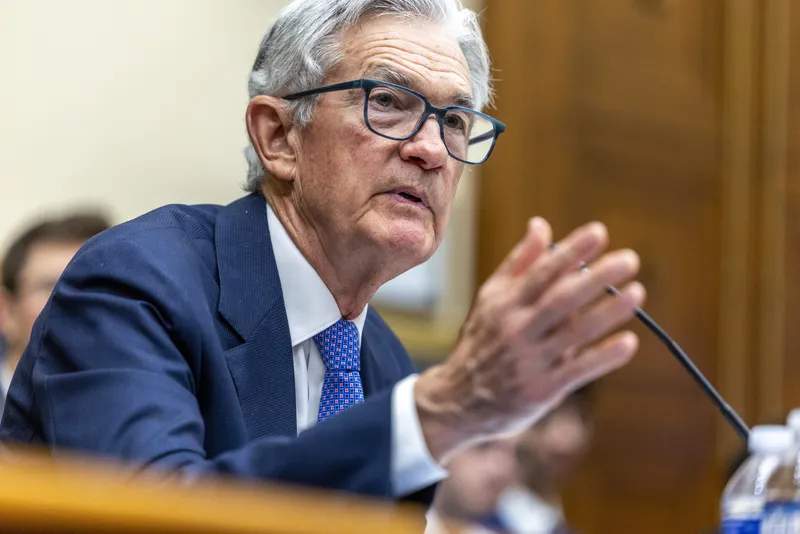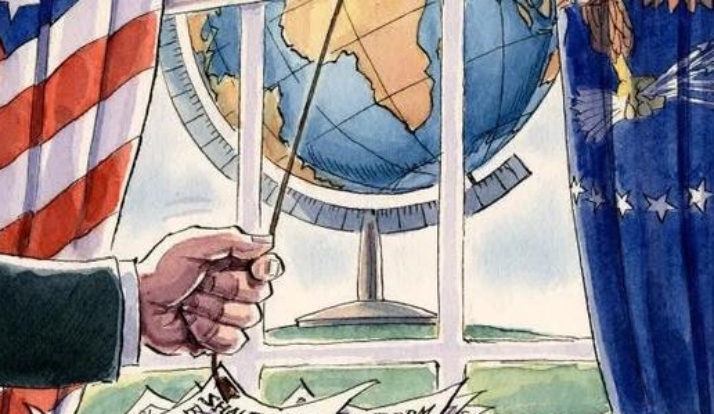
Since August 2024, the policy direction of the Federal Reserve's September interest rate meeting has become the focus of global financial markets. According to the "Federal Reserve Watch" tool of the Zhishang Institute, the market expects the probability of a 25 basis point interest rate cut in September to rise to 96.6%, and the expectation of a 50 basis point interest rate cut is also heating up. From the economic data of falling inflation and cooling employment, to the dovish signals released by Federal Reserve officials, multiple factors point to a high probability of a rate cut in September. However, policy divergence and economic uncertainty still make the magnitude of the rate cut unpredictable and require comprehensive analysis from multiple dimensions.
The focus of the Federal Reserve's monetary policy has shifted from "prioritizing anti inflation" to "balancing growth and employment", which is clearly evident in policy signals and official statements. Although the minutes of the FOMC meeting in July kept interest rates unchanged, they clearly stated that the uncertainty of the economic outlook is "high", and the growth of economic activity in the first half of the year has "slowed down", implying that concerns about the risk of economic downturn have intensified. Since August, Federal Reserve officials have issued dovish signals intensively, with Governor Waller stating that "interest rate cuts should begin in September" and expecting multiple cuts in the next 3-6 months; St. Louis Fed President Mussalem emphasized the increasing risk of a labor market downturn and the need to hedge risks through policy adjustments, in sharp contrast to the previous "hawkish pause", indicating a growing consensus internally on interest rate cuts.
Preventive interest rate cuts are the core logic of current policies. Powell mentioned in his August speech that if this interest rate cut is implemented, it will be a "moderate calibration of policy stance" rather than an emergency measure to address the economic recession. This "preventive" operation has two considerations: first, to avoid the prolonged high interest rates leading to a decrease in corporate investment willingness and a contraction in consumer spending. Currently, the US corporate loan demand index has fallen to its lowest point since 2020, and 70% of small and medium-sized enterprises have expressed high interest rate restrictions on expansion plans; The second is to take advantage of the current window of inflation decline, release policy easing signals in advance, stabilize market expectations, and prevent the economy from falling into recession due to external shocks. From a historical perspective, in 2019, the Federal Reserve initiated interest rate cuts when the economy was not in recession, successfully extending the economic expansion cycle. The current policy approach is similar, which is to safeguard the economy's "soft landing" through a "small step, fast run" interest rate cut.
Although policy differences exist, they are not enough to hinder the implementation of interest rate cuts. At the July meeting, Federal Reserve Governor Bauman opposed a 50 basis point interest rate cut and advocated for only a 25 basis point cut, reflecting concerns among some officials about a rebound in inflation; A few officials also believe that interest rates should remain unchanged, citing the continued stickiness of core service inflation and the mismatch between wage growth (4.1% year-on-year) and the 2% inflation target. But currently, the camp supporting interest rate cuts is dominant: on the one hand, the downward trend of inflation is clear, and even if there is a short-term rebound in the future, it is difficult to reverse the overall downward trend; On the other hand, weak employment and economic data may exacerbate the risk of economic downturn if interest rates are not cut in a timely manner.
The global economic environment also provides "external space" for the Federal Reserve to cut interest rates. The current monetary policies of major economies around the world are in a 'loose resonance', with the European Central Bank initiating interest rate cuts in July, the Bank of England expected to cut rates in September, and emerging market central banks such as Brazil and India having cut rates multiple times. This global easing pattern has reduced the risk of capital outflows that may be triggered by the Federal Reserve's interest rate cuts, and the US dollar index has recently fallen from 104 to 101, easing depreciation pressure and providing a buffer at the exchange rate level for interest rate cuts. If the Federal Reserve cuts interest rates as scheduled in September, it will not only help boost the US economy, but also inject momentum into the global economic recovery, especially by reducing the cost of US dollar financing to alleviate emerging market debt pressure, which is in line with the Federal Reserve's policy of "balancing domestic and global responsibilities".
Overall, the possibility of the Federal Reserve cutting interest rates in September has exceeded 90%, with a probability of starting the interest rate cut cycle by 25BP. If employment and inflation data further weaken, it is not ruled out that a 50BP interest rate cut may be possible. In the short term, interest rate cuts will alleviate downward pressure on the economy and stabilize market expectations; In the long run, this interest rate cut is the starting point for the Federal Reserve's monetary policy to transition from "tightening" to "neutrality", and future policy adjustments will focus more on "discretionary decision-making". For investors, they need to be wary of the risk of "expectation gap". If the interest rate cut is lower than expected, it may trigger a short-term correction in the US stock market; For the global economy, although the Federal Reserve's interest rate cuts are beneficial to demand, attention should also be paid to their impact on global capital flows and exchange rate fluctuations. In the coming months, US economic data will remain a key factor influencing the direction of monetary policy, and the September interest rate meeting will be a "milestone" event for the Federal Reserve's policy shift.

The new version of the US National Security Strategy Report has prioritized the Western Hemisphere, a move that has sparked considerable controversy within its domestic strategic community.
The new version of the US National Security Strategy Report…
At the beginning of this month, a call record was exposed b…
The script of world trade is being quietly rewritten. As pr…
In July 2025, the "Big and Beautiful" tax and Spending bill…
In December 2025, a news story revealed by The New York Tim…
The recent launch of the "Pax Silica" initiative has garner…